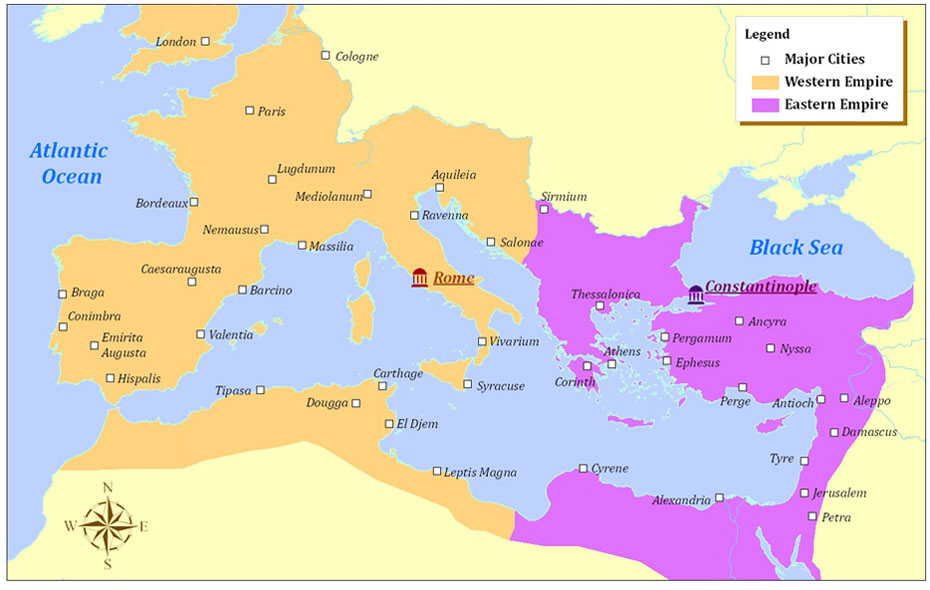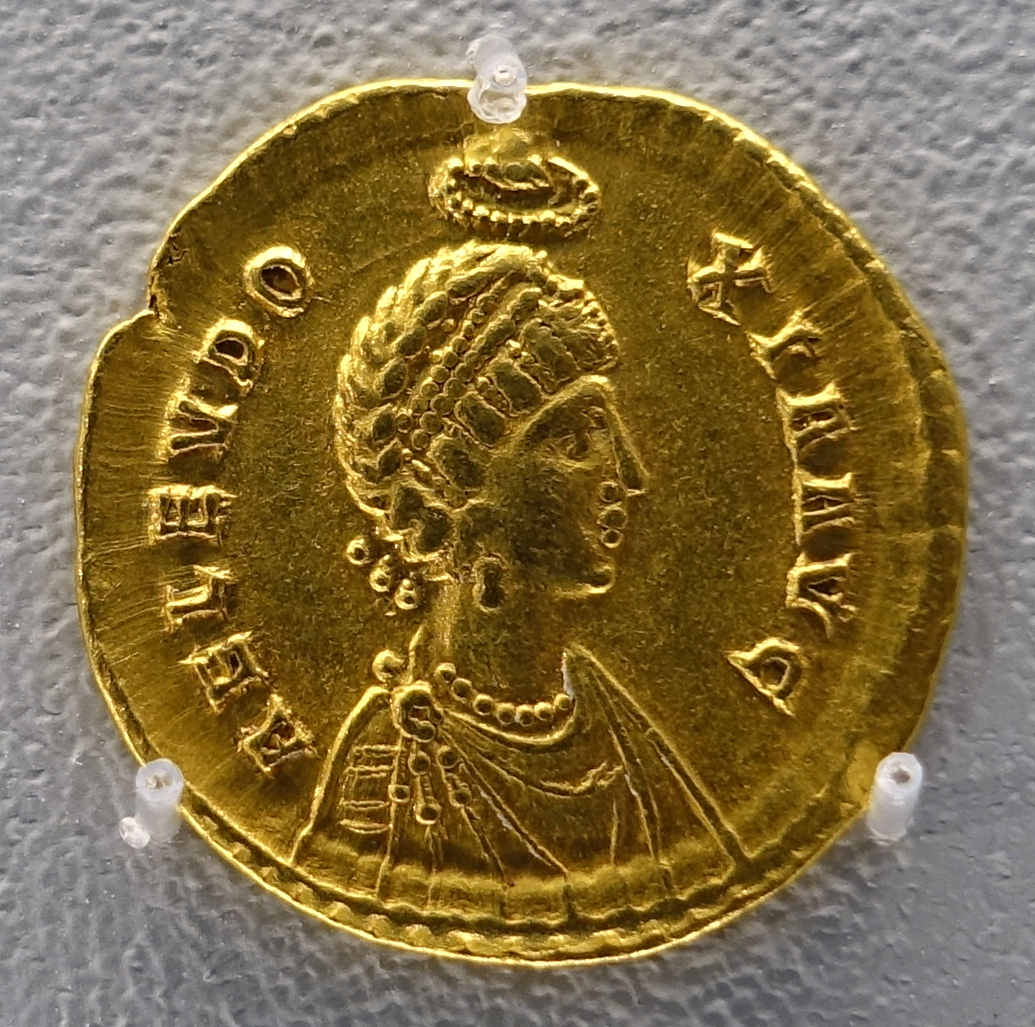Today’s story is about a woman who rose from relative obscurity to the throne of the Roman Empire, a woman who became an influential figure of the church while hosting lavish parties. Today I will tell you about Aelia Eudoxia.
But first let’s take a look at the time she lived in: In 330 the Roman Empire moved its capital from Rome to Constantinople – and it became Christian. This marked the beginning of what is now known as the Byzantine Empire. However, this term is a modern invention and the people of the time would still consider themselves Roman for many centuries to come.
At the time Eudoxia was born, the 380s, former enemies of the Roman Empire were taken into service, beginning to play a more significant role. Her (supposed) father was one of them. He was of the Franks (a Germanic people) and had become a high military commander for the Roman Army. Nothing is known about her mother, although she is presumed to have been Roman. This heritage was to prove difficult for our heroine, as she was considered a “barbarian” by her countrymen – but more on that later.
By 388 an orphaned Eudoxia arrived in Constantinople, the new capital of the Roman Empire, and was taken in by a friend of her father’s, a high-ranking commander himself. There her fate began to show, when she was not only tutored alongside the children of the family but also the sons of the Emperor, Arcadius and Honorius. Soon-ish (about ten years later) the emperor died and his sons divided the Empire with Honorius taking the “original” Western while Arcadius remained in Constantinople – and he needed a wife. For reasons not entirely clear he chose Eudoxia and they were married in 395, with her gaining the title “Aelia.”
Her intelligence and willpower divided popular opinion with many criticizing how much control she held over her husband. That combined with her father’s heritage and her self-confidence made her quite unpopular at court and with the people. But I don’t think she cared. Instead she immersed herself in politics and church affairs, continuously increasing her influence until in 400 she was crowned “Augusta,” empress, and her picture decorated Roman coins (a fact that her brother-in-law Honorius didn’t like too much.) In the meantime she had born two children with a third on the way and would bear two more. She would also suffer two stillbirths but more on that later.
The records of her political activity in court are sparse, but it’s known that she had a say in legal matters and was allowed to wear the purple paludamentum, a garment reserved for people of imperial rank. Her involvement with the Nicene church has been recorded much more thoroughly though. She made herself its patron, attending to religious matters independently, as her husband chose to stay out of them. Remember how I said the people didn’t like her? Well, quite a few people in the church really, really didn’t like her. And so they had a lot to say. Her foremost enemy was John Chrysostom, the patriarch of Constantinople. He was a strong opponent of luxury and openly denounced the lavish parties held by the upper class and the extravagance in women’s clothes – criticism not very subtly aimed at Eudoxia herself. When her son was born in 401, John even suggested Arcadius was not the father. She decided something was to be done about him. Using her influence within the church, she had him banished.
…for, like, a day. As he had been really popular with the common people, they started a riot. Also there was an earthquake in the night of his judgement, which clearly was a heavenly sign. So he was reinstated. You could think he learned his lesson, but nope. Set off by a statue of the empress, John condemned her as Jezebel (who made her husband abandon the Christian god) and Herodias (who was responsible for decapitating John the Baptist; he compared himself to the latter.) And once again he touched on the subject of her children and placed the guilt for a stillbirth in late 403 on her actions. This time he was banished for good.
Eudoxia however did not live to enjoy her triumph for long. She would not survive a second stillbirth and died in October 404, only about 27 years old. Her legacy however lived on with first her son and later her daughter on the Byzantine throne.




Wow, what a strong-sounding woman! Still getting shit done despite all the oppression she faced. Isn’t it wild how childbirth was akin to, like, being a warrior then? Imagine if they had the methods and technology we have now–how much more influence could she have imparted?
Well written and fascinating as always! A great breakfast read 🙂
Her story definitely is a lesson in ignoring the naysayers!
I’m always impressed with women from earlier times who had several children – it was such a huge feat back then, even more so than today. And it’s true, so many stories were cut short by the lack of technology. It’s such a pity.
Finally, thank you so much for reading another post and I’m really happy you enjoyed it!